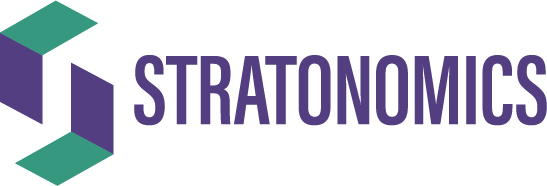Companies rely on dashboards to implement strategy—about 40% of the large U.S.-U.K. companies report efforts to build and use a dashboard.
Strategy implementation dashboards evolved from earlier practices of using control charts, scorecards, tracking studies and metrics-based snapshots. The widespread adoption of dashboards is fueled by advances in data analytics and visualization.
There are advantages to using a dashboard:
- A dashboard visually displays a consistent set of metrics that can be monitored at a given point in time (cross-sectional) and over time (longitudinal).
- This enables management to communicate trends in inputs, processes and outcomes with key stakeholders.
- A dashboard may also be used for planning purposes; key metrics that are part of the dashboard can represent goals to be achieved.
- Management can develop plans around measurable goals and further use a dashboard to monitor progress.
Despite these advantages, dashboards can severely impede and derail strategy implementation. To mitigate the downside of dashboards, executives should consider four issues.

Don’t let dashboards make decisions tactical and reactive.
Many dashboards capture an increasingly smaller slice of time, space and experience. Annual tracking of a KPI became quarterly, then weekly and has become daily, even hourly, in some firms.
This all sounds great. Presumably, armed with more information, more data, more visibility into the KPI, executives can make better decisions, become more strategic and provide a competitive edge. The risk is that managers who are using detailed and elaborate dashboards may make suboptimal decisions due to information overload.
More importantly, the smaller slices of information that populate dashboards can make them more susceptible to outliers. Compared to yearly data, daily data—within a single retail outlet, based on a few customers—can be quite volatile. One or two customers—ecstatic or irate—can spike the daily average for an outlet. Focusing on these spikes can make managers reactive.
To avoid the “more is better” trap, step back and carefully delineate the role a dashboard should play in decisions. A useful dashboard can help set goals, monitor performance, provide implementation metrics and help to provide strategic insights. How often do you need it and at what level? Answer these questions before you decide on the frequency and granularity of data used in your dashboard.
Don’t let dashboards mask strategic trends.
Dashboards that focus only on cross-sectional information can mislead. The cross-sectional information in a dial should be supplemented with long-term longitudinal trends to provide a strategic overview. Good dashboards should also display longitudinal trends relative to a control group (industry average, select competitors and aspirational firms outside your industry). From 2010 to 2013, the management at an oilfield-services company continuously showed a dashboard with decreasing average safety metrics. Without a control group, no definitive conclusions could be drawn. Was the change higher or lower than the trend at other competitors?
Don’t let dashboards focus on analytics at the expense of insights.
Due to their emphasis on quantifiable information, dashboards can push users to focus on analytics—trend lines, bar graphs, pie charts and dials. Is a metric increasing or decreasing, and by how much? How did an opinion or an attitude change since the last period? What percent of people engaged in a specific behavior? How does one subgroup compare to another on key survey items?
Answers to these questions may seem important but are not necessarily insightful. At worst, a focus on answering these types of questions can be utterly misleading. Recall the “dashboard mentality” exhibited by many in the media during the 2016 presidential election. Focused on analyzing the results of day-to-day polls, many in the media failed to gain insights. Every little change in day-to-day polls was overanalyzed. The media gurus became analysts—focused on analyzing one variable at a time: What percentage will vote for the Republican or Democrat candidate? Which issue is more important to which subgroup? Wading deep into analytics, they were unable to provide insights.
What is an insight, and from where does it originate? A practical way to answer this question is to distinguish between the what, why and how of a phenomenon. The “what” pertains to analytics, while the “why” and “how” provide insight.
What is the state of affairs? This can be answered using univariate data analysis—analyzing one variable at a time and comparing it among different subgroups: What percent of people say something? What is the level of agreement, satisfaction or intent based on some survey or behavioral metric? Dashboards adeptly answer “what” questions by displaying dials, trend lines, bar charts and pie charts.
Why is the state of affairs occurring? Why are the people saying something? Why is the level of agreement, satisfaction or intent relatively low or high? To answer these questions, you have to conduct qualitative research—in-depth interviews and prolonged observations—with your customers, coupled with multivariate analysis to understand how multiple variables are related to one another. In most cases, it is a combination of multivariate analysis and in-depth qualitative research that provides the insight—answering the “why” behind the “what.”
How can the state of affairs be influenced? A clear understanding of the “why” helps influence key processes that change future outcomes. A focus on how—by design—is forward-looking and requires an attention to detail to understand the drivers of the desired outcome and an understanding of the process. Companies that can supplement their dashboard with a process to answer the “how” create an enduring and unique capability. Doing this requires employee engagement through discussion forums.
Don’t let dashboards become an end, make them a means to facilitate discussion.
Dashboards, in a rudimentary form, were introduced in the early 1950s by W. Edwards Deming, Joseph M. Juran, and Walter A. Shewhart within the context of total quality management (TQM). TQM used complex statistical tools and experimental methods to generate data that were summarized and visually presented to front-line employees in the form of quality control charts.
The genius of the TQM approach was not in visual analytics. It centered on using visual analytics to generate insights. TQM did that by embedding the analytics in discussion forums such as quality circles. After presenting the dashboard analytics, discussion forums encouraged employees at all levels to elaborate upon the information. The insights generated helped address decision making, enhance manufacturing processes, frame the goal-setting process and develop incentives.
Frequently, it was not the metrics, but the discussions facilitated by the metrics, that led to quality improvement suggestions by employees. Dashboard analytics are important, but insights based on a discussion of the analytics are paramount.
Dashboards replete with numbers will not provide insights. To gain insights, embed the dashboard metrics within forums that facilitate discussions, generate ideas and motivate employees to more systematically use the “what” to move into the realm of “why,” and “how.” Do this at all levels frequently. And consider involving other stakeholders—customers, suppliers and investors—to broaden the pool of insights.
CONCLUSION: An exclusive reliance on dashboards can be counterproductive for strategic thinking and decision making. To get the most out of your dashboards, use them as facilitators of discussions that yield insights. Keeping the dashboard simple, graphical and forward-looking will help the discussion. Provide a decision support system that can bridge the journey from analytics (what) to insights (why, how). Only by making your dashboard a vital part of a broader decision support system can you extract the most value from it.
References:
- This blog is based in large parts on an earlier article I wrote in 2017: “The downside of marketing dashboards,” https://www.ama.org/marketing-news/the-downside-of-marketing-dashboards/
